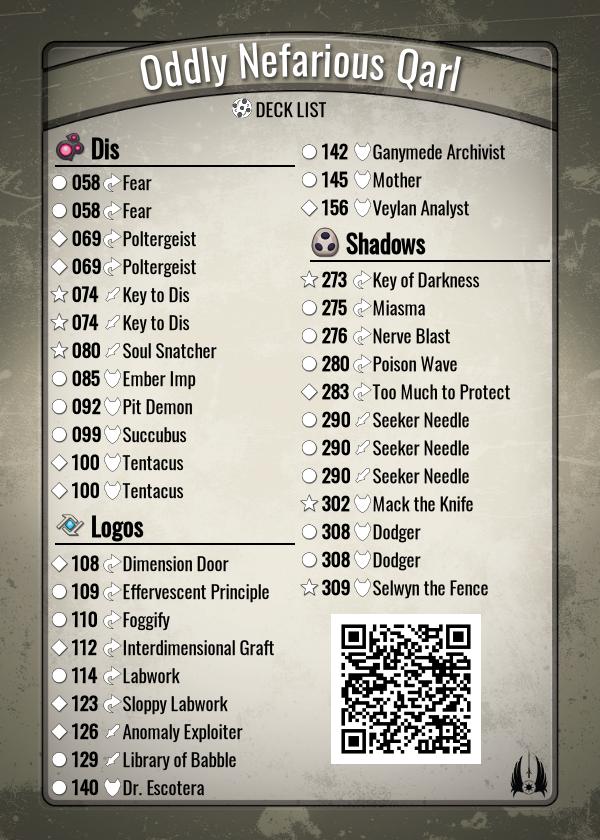Memento Moirai
Abstract
We describe the Moirai format, explore considerations when selecting decks, and compare Moirai to traditional Triad. We assume the reader is familiar with Triad - please see our references below for additional resources on both formats.
Method
We present a description of the Moirai format, as given by the format's developer [1].
Each Player brings 3 decks for a best of 3 match. In each round, participants will play an archon, a reversal, and then an adaptive bo1 game. Prior to the match, your opponent will decide which one of your three decks will play each format and you will do the same for their decks (decisions submitted simultaneously).
Principles of Deck Selection
Decks should be roughly at the same power level. Your opponent will take your strongest deck for the reversal game. Keeping your decks roughly equivalent in power means that any advantage you give up in reversal you can hope to reclaim in archon.
Decks should ideally have similar strengths and weaknesses. A corollary to the above. For example, having just one deck in your lineup with heavy board control may put you in an awkward position against three board heavy decks. In such a situation, you can expect an uphill battle in both archon and reversal.
Above all, bring decks you know well. Chances for success in this format are greatly improved the better you can pilot your own decks, exploit their weaknesses in reversal, and judge their strengths relative to a fresh adversary.
Results
We find Moirai to be an improvement over traditional Triad and an excellent format for both competitive and casual play.
Any deck can be part of a competitive Moirai lineup. Indeed, a valid approach to building your lineup is to start with a favorite deck, regardless of strength, and then build around it.
Consider Oddly Nefarious Qarl:

Qarl is a pet deck of your humble author, dear reader. It may not be making the cut for my Triad lineup but can shine in Moirai. At first blush, Qarl presents as a mediocre "good stuff" CotA pile. However, beneath the surface lurks a truly nefarious combo.
Soul Snatcher, seemingly misplaced in a 13 creature deck, teams up with the two Key to Dis and our scaling steal to generate large aember bursts while clearing the battlefield. For this reason, Qarl performs significantly better against decks without artifact control.
For Moirai, Qarl can team up with two other decks that rely on artifacts. In doing so, deck assignments become very simple: we assign our opponent's deck most suited to dealing with artifacts to reversal, and their deck with least artifact control to archon. Using such a strategy, leveraging consistent strengths and weaknesses across our lineup, we hope shift Moirai from a zero-sum game to one where we can claim an advantage.
With Triad, it's possible too build a thematic lineup that trades raw power for strategic advantage. In practice, we find that many players are best served by bringing their three strongest decks. Conversely, Moirai provides an added layer of strategic depth that rewards such lineup crafting - as illustrated by the example above.
References
- The Moirai format was developed by Karen Brown of The Final Swindle fame. Read more about Moirai, as well as other formats and variants, on thefinalswindle.com:
- For more information on Triad and other formats included in official FFG organized play, we direct the reader to Archon Arcana.